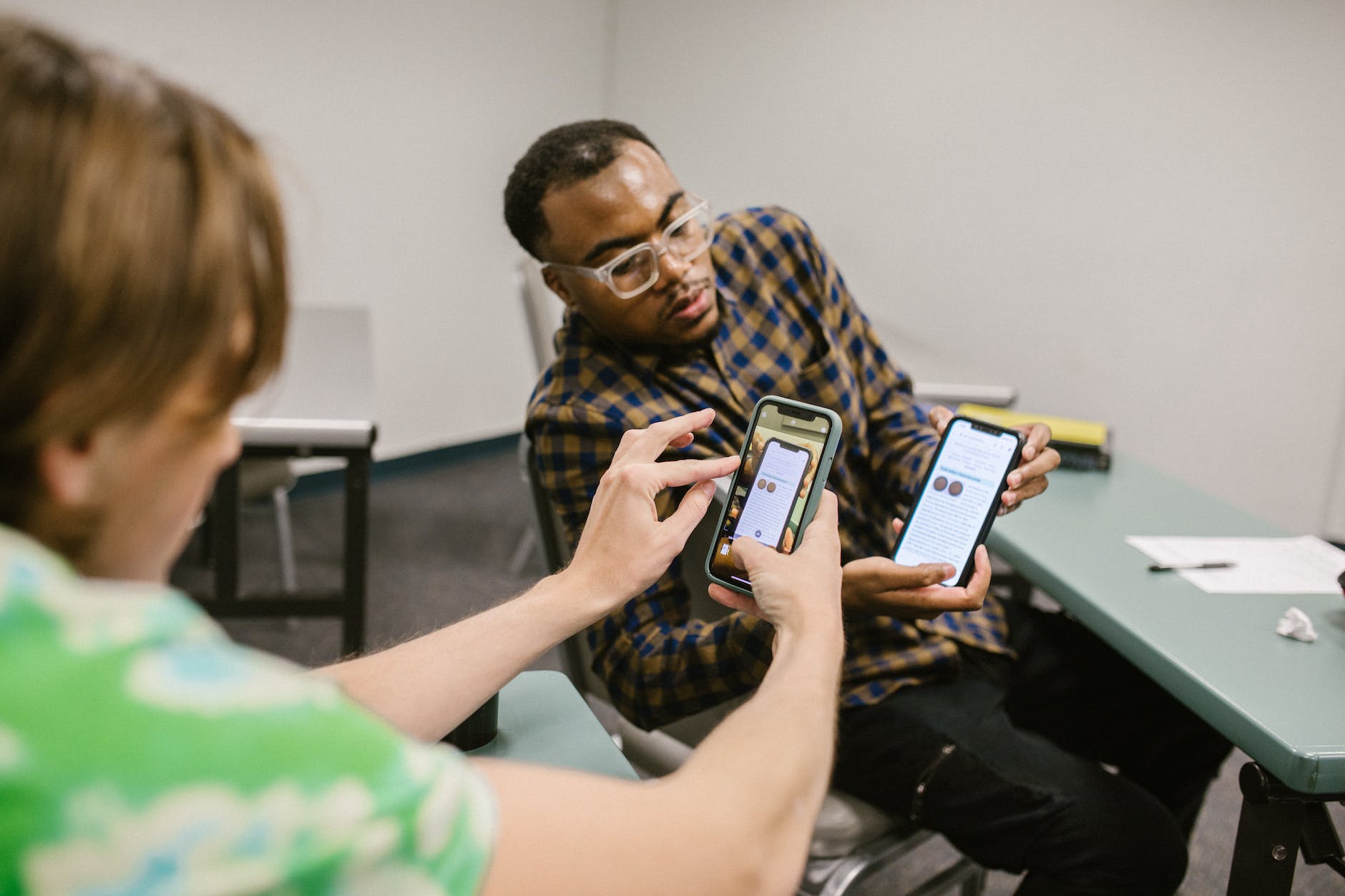Plagiarism is a serious issue that can have serious consequences for writers, bloggers, and content creators.
Not only is it unethical to use someone else’s work or ideas without proper attribution, but it can also damage your reputation and credibility as a writer.
That’s why it’s so important to make sure you’re not committing plagiarism in your work.
But what exactly is plagiarism? Simply put, it’s the act of using someone else’s work or ideas without giving proper credit.
This can include directly copying text from a source without using quotation marks, using someone else’s ideas or research without proper citation, or presenting someone else’s work as your own.
Plagiarism can occur intentionally or unintentionally, but either way, it’s important to avoid it in your work.
By understanding the importance of avoiding plagiarism and knowing what it is, you’ll be better equipped to avoid it in your own work. In the next section, we’ll provide some tips to help you do just that.
What is the #1 cause of plagiarism?
There isn’t necessarily a single “cause” of plagiarism, as it can occur for a variety of reasons. However, one common reason for plagiarism is a lack of understanding about what constitutes as plagiarism and how to properly cite sources.
Other reasons for plagiarism may include a lack of time or effort to properly research and cite sources, a lack of confidence in one’s own ability to write original content, or a lack of understanding about the importance of proper attribution.
In some cases, plagiarism may be intentional, but more often it is unintentional and occurs due to a lack of knowledge or care about proper citation and attribution practices.
And here is the 4 potential causes of plagiarism listed:
- Lack of understanding about what constitutes as plagiarism and how to properly cite sources.
- Lack of time or effort to properly research and cite sources.
- Lack of confidence in one’s own ability to write original content.
- Lack of understanding about the importance of proper attribution.
Intentional plagiarism in an attempt to pass off someone else’s work as one’s own.
It’s worth noting that these are just a few potential causes of plagiarism, and there may be other factors at play as well. Ultimately, it’s important to understand the importance of proper citation and attribution practices and to make an effort to avoid plagiarism in your own work.
Common Mistakes that Can Lead to Plagiarism
While there are a number of tools and techniques that can help you avoid plagiarism in your work, it’s still possible to make mistakes that can lead to unintentional plagiarism. Some common mistakes include:
Failing to properly cite sources
One of the most common mistakes that can lead to plagiarism is forgetting to properly cite your sources.
This can happen when you’re in a rush, when you’re using a lot of different sources, or when you’re not familiar with the proper citation style.
It’s important to be diligent about citing your sources correctly to avoid any accidental plagiarism.
Not using quotation marks when necessary
Another mistake that can lead to plagiarism is failing to use quotation marks when directly copying text from a source.
This can happen when you’re not paying close attention or when you’re not familiar with the rules for using quotation marks.
It’s important to use quotation marks whenever you’re directly copying text to avoid any accidental plagiarism.
Copying text or ideas without realizing it
Sometimes, you may unintentionally copy text or ideas from a source without realizing it.
This can happen when you’re reading a lot of different sources and trying to absorb a lot of information quickly.
It’s important to be mindful of this risk and to carefully proofread your work to catch any instances of accidental plagiarism.
By being aware of these common mistakes and taking steps to avoid them, you can help ensure that you’re not committing plagiarism in your work.
It’s always better to be safe than sorry, so be sure to double-check your work and properly cite your sources to avoid any accidental plagiarism.

How to Avoid Plagiarism While Copying: Tips
As a writer, blogger, or content creator, it’s important to always give credit where credit is due and to properly cite any sources that you use in your work.
Plagiarism is the act of using someone else’s work or ideas without proper attribution, and it is not only unethical, but it can also have serious consequences.
Here are a few tips to help you avoid plagiarism while copying:
1. Use quotation marks when directly copying text from a source
When you’re using someone else’s words verbatim, it’s important to use quotation marks to indicate that you’re directly quoting the source.
This not only helps you avoid plagiarism, but it also allows readers to easily see which ideas are yours and which ones are from the original source.
2. Paraphrase and cite sources when using someone else’s ideas
If you want to include someone else’s ideas in your work, it’s important to paraphrase them and provide proper citation.
This means rewording the idea in your own words and providing a reference to the original source.
By doing this, you can avoid plagiarism while still incorporating other people’s ideas into your work.
3. Use proper citations when using someone else’s data or statistics
If you’re using someone else’s research or data in your work, it’s important to provide proper citation.
This means including a reference to the original source in your text and also providing a full citation in your list of references.
By doing this, you can avoid plagiarism and also give credit to the original researchers for their work.
4. Use tools:
Online Tools for Avoiding Plagiarism
Here are a few examples of tools that can assist with avoiding plagiarism:
1. Plagiarism checkers:
These tools can scan your work for instances of copied text and highlight any areas that may be flagged as plagiarism. Some popular options include Turnitin and SafeAssign.
2. Citation generators:
These tools can help you create proper citations for your sources in the appropriate format, such as MLA or APA. Some examples include EasyBib and Citation Machine.
3. Paraphrasing tools:
These tools can help you rephrase text in your own words, which can be useful when you want to include someone else’s ideas in your work but want to avoid direct copying. QuillBot and Paraphrase Online are two options to consider.
4. Grammar checkers:
These tools can help you catch any errors in your writing, including instances of accidental plagiarism that may occur due to mistakes or misunderstandings. Grammarly and ProWritingAid are two popular options.
By using these tools, you can help ensure that you are properly citing your sources and avoiding plagiarism in your work. It’s important to note, however, that these tools are not foolproof and should not be relied upon entirely. It’s still important to carefully proofread your work and make sure that you are properly attributing any sources that you use.
Conclusion
In this blog post, we’ve discussed the importance of avoiding plagiarism in your work and provided some tips and tools to help you do just that.
By using quotation marks when directly copying text, paraphrasing and citing sources when using someone else’s ideas, and using proper citations when using someone else’s data or statistics, you can help ensure that you’re not committing plagiarism in your work.
We’ve also discussed some of the common mistakes that can lead to plagiarism and how to avoid them.
As a writer, it’s crucial to make sure you’re giving credit where credit is due and properly citing your sources. By following these tips and using the right tools, you can avoid plagiarism and maintain your reputation and credibility as a writer.
We encourage you to take these steps to avoid plagiarism in your own work, and if you have any questions or concerns, don’t hesitate to reach out for help.
FAQ about avoiding plagiarism while copying:
What are the ways you can avoid plagiarism?
- Use quotation marks when directly copying a phrase or passage from a source. This clearly indicates to your readers that the words are not your own and gives credit to the original author.
- Use paraphrasing to rephrase someone else’s ideas in your own words. Make sure to still provide a citation for the original source.
- Use quotation marks and citations when using someone else’s data or statistics.
- Always double-check your work for proper citations and attribution. A plagiarism checker can be a helpful tool for catching any accidental instances of plagiarism.
- Use your own original ideas and content as much as possible. Plagiarism is less likely to occur if you are not relying on external sources for the majority of your work.
What is the golden rule of plagiarism?
There isn’t a single “golden rule” of plagiarism, but one general rule that is often cited is to “give credit where credit is due.” This means properly citing any sources that you use in your work and giving credit to the original authors for their ideas and creations.
By following this rule, you can avoid plagiarism and ensure that you are being ethical and honest in your work.
Other rules that are related to avoiding plagiarism include using quotation marks when directly copying text from a source, paraphrasing and citing sources when using someone else’s ideas, and using proper citations when using someone else’s data or statistics.







